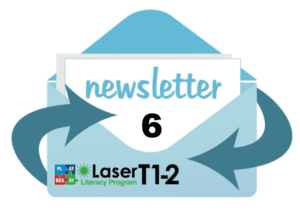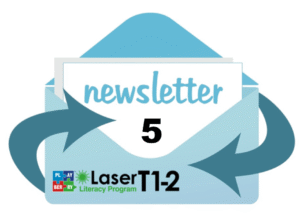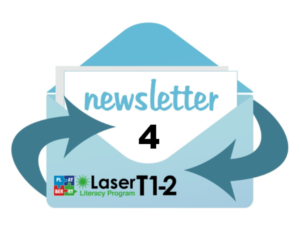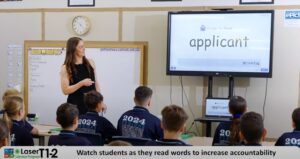What are Rosenshine's Principles of Instruction?

Bill Hansberry
Co-Director Playberry Laser
Barak Rosenshine, an American educational psychologist, developed Rosenshine’s Principles of Instruction. His principles are based on empirical research and observations of effective teaching practices. These principles aim to provide teachers with a framework for effective instructional strategies. Rosenshine began work in the 1970s and 1980s, conducting studies and synthesising research findings on effective teaching methods. His work culminated in identifying principles that he observed to be present in successful classrooms.
Rosenshine’s Principles of Instruction have gained momentum, prompting us all to consider whether our teaching is compatible with human cognitive architecture. Their common sense and simplicity strike anyone who reads them. Rosenshine’s Principles provide a clear roadmap for improving students’ retention and application of what we teach them.
Rosenshine’s Principles of Instruction reflect fundamental elements that have stood the test of time and are rooted in the foundations of successful teaching practices. For me, Rosenshine’s principles are highly congruent with the methodologies for teaching individuals with dyslexia developed by Samuel Orton and Anna Gillingham in the 1920s. The enduring nature of these effective teaching principles underscores that regardless of educational advancements and evolving methodologies, certain fundamental elements of excellent instruction remain constant.
Over this series of posts, I will lay out each of Roshenshine’s ten principles as outlined in an article Rosenshine wrote for American Educator in the Spring of 2012 and elaborate slightly on each of these, bringing some of my thoughts and insights to them, particularly in how they relate to how many of us in the evidence-informed teaching of literacy space have relearned to teach structured literacy lessons and how this explicit and routine heavy teaching has successfully spilt into other curriculum areas. I want to show how we’ve been adhering to these principles of instruction all along.
Principle 7: Obtain a high success rate: It is important for students to achieve a high success rate during classroom instruction.
“Research Findings
In two of the major studies on the impact of teachers, the investigators found that students in classrooms with more effective teachers had a higher success rate, as judged by the quality of their oral responses during guided practice and their individual work…” (Rosenshine)
Research suggests that an 80% success rate is optimal. A high success rate like this indicates that students are learning new material but also being challenged enough. There are no surprises in this finding. If students have a high success rate, it is evident that teachers have been teaching in small, manageable steps and have checked for understanding (see my last post on Principle 6) along the way. Also, not surprisingly, these teacher effectiveness studies found that a high success rate in guided practice leads to high success rates when students work independently on their own tasks.
When students are learning something new, their mental schema for that new knowledge is incomplete. They are forming a general idea or gist of the new information in their long-term memory and looking for background knowledge (existing schema) for this new information to bolt on to. In this shaky stage of schema formation, students sometimes try to connect new information to background information knowledge that it doesn’t apply to, like trying to add the numerator and denominator when adding fractions, thinking that the procedure is like multiplying fractions. It’s also common for students to overapply a newly learned procedure, for example, dropping the letter ‘e’ when adding all suffixes to words ending in ‘e’, not just for vowel suffixes. If these errors or misunderstandings go uncorrected, they will be practised, and the student will learn and practise a mistake, further embedding it in long-term memory.
Without a high success rate, students are likelier to lock in errors and misconceptions that will set them back.
Teachers using the EDI™ framework are familiar with the 80% success rate benchmark and immediately reteach if it becomes evident that this isn’t being reached. Within the EDI™ framework, teachers check for understanding after teaching small pieces of information (see my post on Rosenshine’s 2nd Principle). If common errors or misunderstandings occur in roughly 20% of the students, the teacher immediately reteaches the part that has been misunderstood to the entire class. This highly diagnostic form of teaching is what intervention specialists usually do, but with entire class groups of students, EDI™ promotes clever sampling procedures that are used when checking for understanding to see whether there is an 80% success rate is being achieved.
As well as improving learning outcomes, high rates of success are also motivating for students. I’d argue that increasing student success is the most motivating thing we can do for students. Improving student motivation is often misunderstood and confused with trying to make learning fun or easy for students. Learning something new is hard and requires lots of practice and a few (quickly corrected) mistakes along the way. Piaget explained that we all feel a little unsteady (disequilibrium, he called it) when encountering information that doesn’t fit easily with what we already know or can already do. The effort involved with altering our existing schema or building new schema in long-term memory to house this new information brings us back into a state of equilibrium where the new information eventually fits and begins working for us. New learning always feels hard for a while, but with effort, it gets easier and feels even a little rewarding.
In an attempt to lift student motivation for sticking with learning hard stuff, many schools have turned to the vital work of Carol Dweck, teaching students that learning is hard and that intelligence grows through hard work. These are important messages for students, but many schools haven’t matched this rhetoric with a sustained effort to improve teaching in line with research-supported approaches like Rosenshine’s Principles. The notion of productive struggle has also become popular and, in some cases, when combined with Dweck’s ideas, has become a convenient way to lay blame on students for their lack of success when poor teaching has been the culprit.
Thankfully, many schools are lifting the bar, notably in disadvantaged areas, through brutally honest analysis of effective teaching. They’ve stopped blaming students’ fixed mindsets or their reluctance to struggle. They’ve scaled back on the excuse-making and claims that the curriculum asks too much of ‘their’ kids (as if their students are so distinct from other students in other schools). These schools have instead looked bravely at what they can control – how they teach. I’ve watched first-hand how high success rates are being achieved with the most stubbornly disadvantaged and complex cohorts of students.
Playberry Laser T1-2 is a teacher-supportive multisensory literacy resource for primary teachers to support their teaching in line with research. We’ve taken the planning and resource design load to free teachers to focus on building content knowledge and sharpening their delivery in line with Rosenshine’s Principles of Instruction.
Reference:
Rosenshine, B. (2012). Principles of instruction: Research-based strategies that all teachers should know. [online] American Educator, American Educator, pp.12–39. Available at: https://www.aft.org/sites/default/files/periodicals/Rosenshine.pdf





